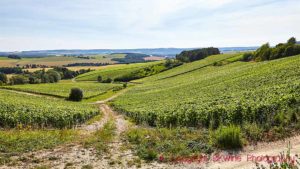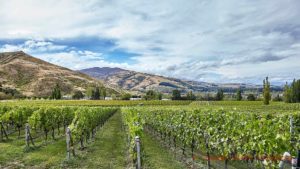The wine harvest in Austria in 2011 was overall good in quality as well as quantity according to the Austrian Wine Marketing Board.
It was not a year without problems, warm weather for example led to low acidities unless the winemaker was careful. The volume was up to ”normal” levels after a 2010 that was very limited in quantity.
The information from the Austrian Wine Marketing Board is generally very informative so we publish the entire press release from them here. It includes a general overview of the harvest and the weather as well as details for each region: Burgenland, Niederosterreich, Steiermark, and Wien.
[hr]
2011 – A Rewarding Year
Austria’s 2011 vintage finally has the cellars full again. The weather gave us healthy and ripe grapes for the most part – a reward for all the good work and for the challenges over the last few years. The warm Summer this year did present its own challenges in terms of choosing the right leaf management and with the somewhat moderate acidity content; careful vinification was in order. But the high level of education and experience of Austria’s oenologists are ensuring the best for this vintage – that fine, fruity wines are being vinified and that drinking pleasure will be had not only with the young wines, but also for those that reach mature levels.
The Weather in 2011
After the previous two years, which had marked weather difficulties, Austrian vintners were appeased this year by the Weather Gods. Even though there were cold winter temperatures, frost damage at the beginning of May, a dry period in July and even some hailstorms, there was still plenty of optimal weather to be had. The beautiful flowering period lead to a good fruit set, and the sunny and warm weather of late Summer delivered a good ripening phase. The continuous lovely weather conditions allowed for the luxury of choosing a harvest day according to the ripeness sought, and of “waiting it out” periods if desired. This resulted in a varied and long harvest – for example, by the beginning of the main harvest period on the Wagram, already the first bottled young wine from the Seewinkel in Burgenland was on the table. Thanks to the dry weather, there were very few fungal diseases. There was some heavy wasp infestation in a number of regions.
The warm weather did lead to evanescent acidity. This meant that vintners had to be cautious not to miss the right harvest time. Because of the early flowering (two weeks earlier than last year), the harvest was finished more or less by the end of October – except for the Prädikat wines, of course.
The Harvest Quantity – Good Results !
Finally, the presses were again in full swing. The current total harvest volume estimate according to Statistik Austria is 2.45 million hectoliters. This is 2% above the five-year average, but even more significantly, it is 41% more than last year’s total. Of course, there were regional differences. Hail and frost damage in some areas resulted in yields that were smaller in comparison to the long-term average. Nevertheless, the empty cellars were filled again.
Burgenland
The weather here was similar to that in other wine-growing areas. The earlier-than-usual flowering and harvest dates as well as good weather conditions allowed for well-planned work without any of the stress that was so prevalent last year, when the danger of rot had propelled the harvesting to be undertaken in the shortest time possible.
There were some problems with regional dampness and winter frosts, the cold at the beginning of May and the hailstorms on June 23rd – which hit 1,600 hectares very hard. But the sunny and dry weather nurtured the healthy, undamaged grapes that were brought into the cellars. Because of the acidity, however, good nerves were required for optimal maturation to be reached. The harvest here was status quo with an estimated 715, 200 hl – up 54% from last year. This is just as pleasing as the wine quality itself: firm fruitiness and pleasant acidity accompanied by – in the red wines – a distinctive deep, dark colour.
Niederösterreich
Taking into account the varied conditions in the different regions during the year – frost and hail, for example – an average volume of 1.5 million hl is estimated. The Weinviertel and the Thermenregion are showing volumes lower than their long-standing averages (Weinviertel down 9%; Thermenregion down 3%). Throughout Niederösterreich, wasps were a very disturbing element for the grape pickers as well as for the wine quality. In fact, some of the harvest was completed early because of wasp damage. Otherwise, the acidity became the main focus, as warm temperatures sparked a partial rapid decrease – to achieve just the right balance between physiological ripeness and good acidity backbone.
Steiermark
This year, the Steiermark was favoured by the weather. There was little frost and, even despite some hail damage, the average volume increased by 19% in comparison with the 5-year average. The estimated 226, 600 hl reflects a 28% increase over last year. Because of the early and relatively short flowering period, also the harvest began somewhat early and was completed rather quickly in order to “catch” the right acidity and sugar content. The main harvest was over by mid-October, and good leaf management brought fruity and full-bodied wines.
Wien
The hailstorm on June 4th is now a bad memory for the vintners of Döbling and Stammersdorf. Damage and yield loss were left in its wake. Nevertheless, Vienna boasted very good quality and a yield just slightly below the long standing average. As in other regions, the work in the vineyards determined the high gradation and acidity content. A multi-faceted selection of fruity and bodied wines is expected.
Press information
Austrian Wine Marketing Board
Susanne Staggl








